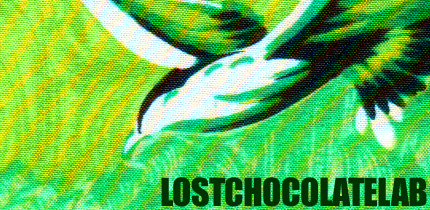Monday, May 14, 2012
Racing Game Sound Study [Links]
I tend to bury a lot of information within the text of these sound studies to serve as a further "jumping off point" for readers to dig deeper after they've made their way through the bulk of the research. Understandable, not everyone is into power-browsing with a multi-tabbed monstrosity within their search engine. So, here are the various links that were sprinkled throughout the study for you to further peruse at your leisure.
The study is represented by three posts:
Racing Game Sound Study - Lost Chocolate Lab
Racing Game Sound Study -Track Time Audio
Racing Game Sound Study - Game Audio Podcast
And an introductory article in Game Developer Magazine:
Vroom Vroom - A Study of Sound in Racing Games
Also, be sure to back the Dyno Sessions Kickstarter Project
More links after the [JUMP]
Tuesday, May 01, 2012
Racing Game Sound Study
Welcome to the Racing Game Sound Study
These informal game sound studies aim to expose the technical side of game audio by making an assessment of current generation titles. The assessment is then used as a way to better understand the differences in approach, aesthetics, and progression of techniques across a small sample. By turning the focus onto emerging details that arise during the course of the study we are able to identify area’s of significance and interest that help communicate the current state of the art. These finding are then represented in a content-rich report that includes: video’s, article links, and specialized interviews. The goal is to help raise awareness for the technical side of sound design and help in the understanding of what is often not very well represented in current literature.
The study is represented by three posts:
Racing Game Sound Study - Lost Chocolate Lab
Racing Game Sound Study -Track Time Audio
Racing Game Sound Study - Game Audio Podcast
And an introductory article in Game Developer Magazine:
Vroom Vroom - A Study of Sound in Racing Games
...and a seperate post rounding up all the embedded links in this post:
Racing Game Sound Study [Links]
Here's an admission: I'm not really that into cars. The last one I owned took it's own life last fall in a billowing smoke cloud of explosive glory and has yet to be replaced. I still drive on occasion when I have to, but I guess that's one of the reasons I like living in the city: there's plenty of potential within walking/ biking distance and I don't mind having an excuse to slow down the flow of time. Don't get me wrong though, the sound of engines speak deeply to my love of noise and penchant for drones - coupled with games it becomes an almost irresistible combination.
Here's another thing: racing games present an interesting challenge. On one hand, they represent a deep simulation that attempts to recreate the base components of a vehicle’s engine and mechanical performance, and on the other hand attempts to give players access to an experience that is often unobtainable. It's a small pool of highly specialized talent that will ever have occasion to strap into a rally or formula one car to experience the thrill of racing. But being able to experience the thrill without the danger is something that games have always provided a safe place to experiment with.
While games generally do a good job of enabling role-play, not all racing games have their roots so firmly planted in the reality of everyday life. I mean, most of us have driven cars. We know what it means to accelerate and break, the feel of inertia when turning a corner and the emotion involved when interacting with other drivers on the road. Racing games do a good job of taking this shared experience and amplifying it by creating a time based reward system that is dependent on your skill as a driver. Additionally, the sound and fury of driving is often abstracted from the realistic simulation going on under-the-hood in order to make a more compelling and fun driving experience.
- TIRE SQUEALS
- ENGINE ACCELERATION/ DECELERATION
- SURFACE MATERIALS
- CAMERA PERSPECTIVES
- ENVIRONMENTAL AND DAMAGE
- USER INTERFACE

